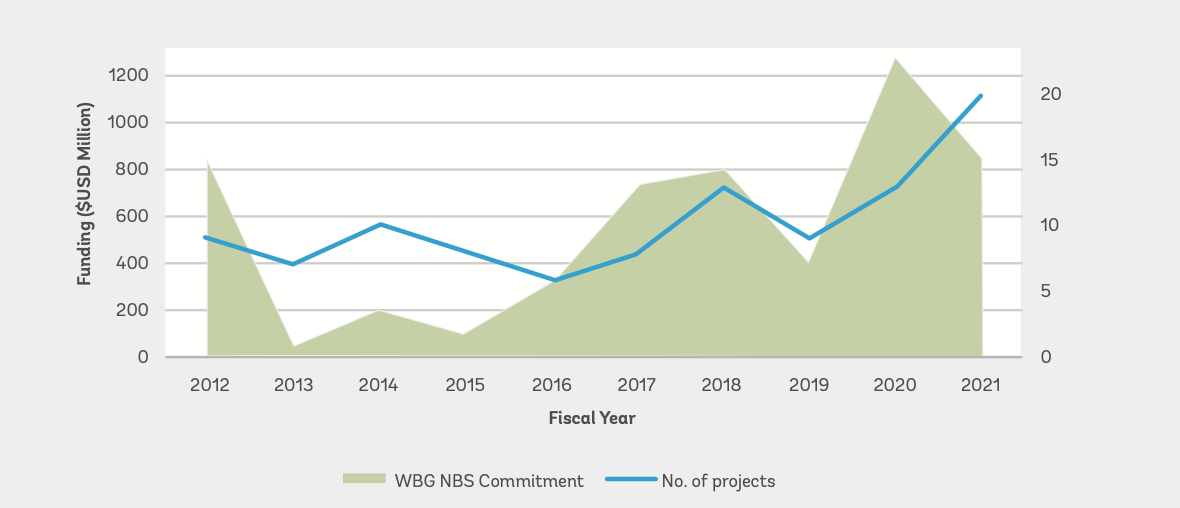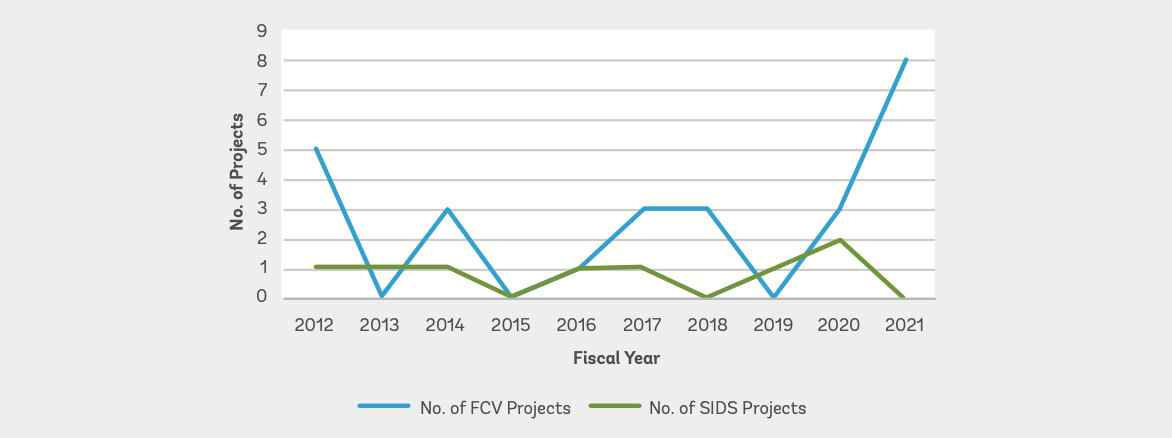Solutions for vanishing coastlines: Adapting to coastal erosion in Small Island Developing States

The 2024 edition of the Global Center on Adaptation (GCA)’s State and Trends in Adaptation report (STA24) will provide an integrated overview of climate risks, adaptation action, and financing needs and gaps in Small Island Developing States. The report, expected to be published in January 2025, will include a chapter on coastal erosion, presented below.
Coastal erosion threatens vulnerable coastal communities across Small Island Developing States (SIDS).
In response, island nations must rapidly deploy effective and scalable adaptation solutions that utilize nature, community participation, and innovative technologies.
Understanding coastal erosion in SIDS
Coastal areas in SIDS underpin critical industries such as tourism and fisheries, provide protection against coastal hazards, harbour productive and diverse ecosystems, and are integral to the social fabric of local communities. However, due to the concentration of economic and community activities within the coastal zone, SIDS have been identified as some of the most vulnerable countries to climate change and coastal erosion.
Alongside the increasing impacts of climate change and rising sea levels, various anthropogenic activities are exacerbating coastal erosion processes in island nations. Poorly regulated coastal development, land use changes, sand mining, and the degradation of coastal ecosystems all contribute to the acceleration of coastal erosion in SIDS.
Using satellite data from 1984 to 2015, one study of global erosion trends estimated that island nations across the Pacific had a net erosion rate of 2 m per year - double the average global erosion rate. Likewise, across the Caribbean, island nations are expected to lose up to 3,900 km2 of land to rising seas and erosion by 2050, with the total economic value of this projected loss of land estimated between US$ 406 billion and US$ 624 billion.
In response to this challenge, urgent action is required to find sustainable and cost-effective solutions that can be implemented at scale to limit the negative impacts of coastal erosion and sea level rise. This requires rapidly deploying public, private, and international finances to fund adaptative and innovative projects across SIDS.
Are current adaptation approaches suitable?
Conventionally, grey infrastructure solutions such as sea walls and revetments have been used to combat coastal erosion and flooding in SIDS, especially in densely populated coastal cities. When properly designed, these structures can effectively stabilize vulnerable coastlines and provide protection to critical assets and exposed communities.
Despite their benefits, grey infrastructure solutions require substantial upfront capital expenditure. Furthermore, they can lead to unforeseen maladaptive consequences that exacerbate erosion processes and cascading impacts that may cause adverse social and environmental effects. In Fiji, two concrete seawalls were constructed to protect remote villages from coastal flooding. However, a post-construction study found that the walls did not alleviate erosion and flooding pressures. Instead, they acted as a dam to the inland drainage system, worsening pluvial and fluvial flooding on the landward side.
In a SIDS context where sea levels are rapidly rising and other climatic factors are quickly changing, the fixed nature of grey infrastructure risks becoming ineffective and maladaptive. For effective and scalable adaptation pathways, soft solutions must be found that are low-cost, flexible, and able to harmonize with conventional grey infrastructure and create successful coastal protection systems.
What role can nature play in coastal protection?
Nature already plays an essential role in protecting coastlines from erosion. Mangroves, coral reefs, dunes, and ocean grasses all provide protective benefits - from the attenuation of wave and wind energy to the buffering of coastal storm surges. SIDS have some of the highest concentrations of these ecosystems compared to elsewhere.

Figure 1. Approved WBG projects with NbS for climate resilience and cumulative approved WBG commitment for NbS from FY12 to FY21. Source: Nature-Based Solutions for Climate Resilience in the World Bank Portfolio, WBG 2023
Nature-based solutions (NbS) are becoming a core component of climate resilience plans. In 2021, the World Bank provided more than US$1 billion of funding for NbS projects globally. However, only eight percent of these projects were implemented in SIDS due to the geographical and access challenges and the severity of climate risks that call for more complex built environment solutions (figures 1 and 2). The Asian Development Bank allocated US$825 million for coastal ecosystem resilience between 2019 and 2023. This mobilization has increased the number of NbS projects in SIDS, such as dune restoration and coastal vegetation planting.
While developing NbS brings protection benefits, it is not a panacea for reducing the advancement of coastal erosion and flooding threats. NbS often requires careful management and long-term investment to achieve the protection benefits and ecosystem services existing mature ecosystems provide. Therefore, the preservation of already established ecosystems must be prioritized. While ecosystems' economic costs and benefits are challenging to quantify, evidence suggests their coastal protection value is hugely significant. One study from the World Bank in 2023 found that mangrove forests in Jamaica provide average risk reduction benefits against tropical cyclones of around US$2,500 per hectare per year and US$180 million annually in carbon sequestration benefits. Likewise, the estimated hazard risk reduction benefits of coral reefs in the US are US$1.8 billion annually.

Figure 2. Number of NbS for climate resilience projects in SIDS and FCV (countries affected by fragility, conflict, and violence) context approved by the World Bank in the FY12-21 period. Source: Nature-Based Solutions for Climate Resilience in the World Bank Portfolio, WBG 2023
To protect against coastal erosion and flooding, small island nations must take the necessary steps to prevent the degradation of vital coastal ecosystems by banning and monitoring illegal sand mining, preventing the development of assets directly on the shoreline, and halting the clearing of coastal vegetation.
Leveraging community-based adaptation and technology to improve coastal resilience
Many small island populations live in remote locations isolated from main population centres. In these remote communities, adaptation measures that combine community participation with mapping and risk and hazard modelling tools and technologies can better inform protection measures for the most vulnerable communities.
In São Tomé and Príncipe, participatory multi-hazard risk assessments have been conducted in close collaboration with communities in data-scarce environments to analyze adaptation options and increase climate resilience. Elsewhere in the Caribbean, the Resilient Coasts - Caribbean Sea project, running from 2024 to 2026, delivers a series of 'Living Labs' or workshops to local communities to explore how they can bolster their resilience by restoring coastal ecosystems and applying NbS. These initiatives provide viable pathways for effective adaptation by combining local knowledge with science to boost resilience to natural hazards.
At the global level, the Global Facility for Disaster Reduction and Recovery (GFDRR) and the World Bank have developed the Nature Based Solutions Opportunity Scan (NBSOS). The NBSOS is a geospatial tool utilizing large global datasets to map the potential benefits of NbS and identify coastal protection investment opportunities worldwide. The tool has been implemented in 20 countries, including in SIDS, to inform coastal protection solutions.
A pathway towards sustainable and scalable adaptation strategies
Small island developing states must take decisive action in the face of rising sea levels and accelerating coastal erosion. To ensure successful adaptation outcomes, island nations must be informed by big data and participatory geospatial tools to prioritize the preservation of existing ecosystems and the deployment of adaptive measures. These strategies offer a pathway for resource-constrained governments to implement sustainable and scalable adaptation strategies to protect their most vulnerable coastal communities.
Sergio Vallesi is a senior environmental engineer with over 20 years of multi-disciplinary international experience and has been consulting since 2018 for the World Bank Group, the United Nations Convention to Combat Desertification, and the Food and Agriculture Organization of the United Nations, working on climate change-related assignments across various teams and regions, as well for universities, non-governmental organizations, and the private sector through his consultancy, Hydro Nexus.
Before that, Sergio worked in the UK for HR Wallingford, an international consulting firm specializing in water resource engineering, and for Durham University Business School. Formerly, he worked for over ten years in New Zealand, managing civil maintenance, dam safety, and environmental management programs for the hydropower generation sector across the two islands. His primary expertise is integrating green & grey infrastructure and using nature-based solutions to tackle global challenges such as climate change adaptation and mitigation, land degradation and desertification, security and access to water, energy, food/nutrition, as well as protecting biodiversity and nature.